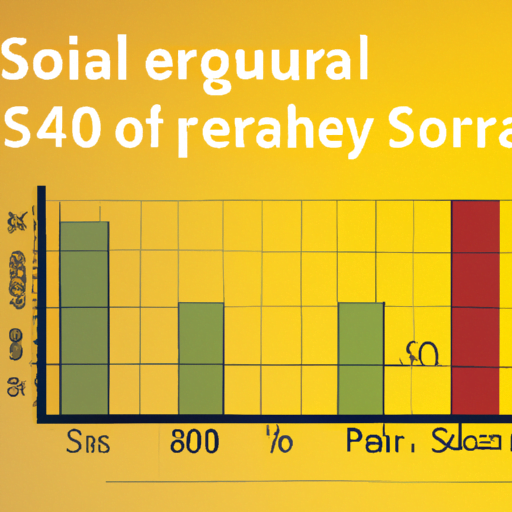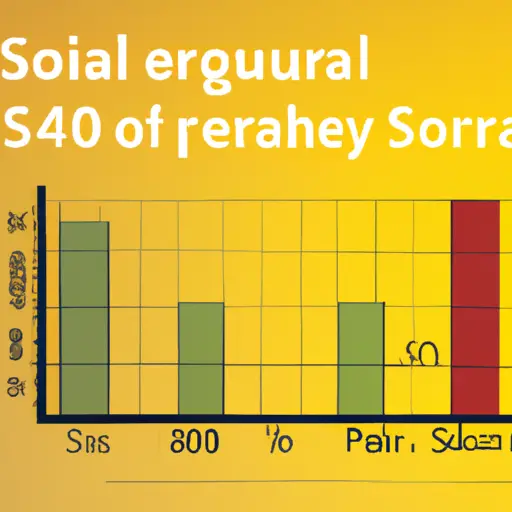So, picture this: you’ve decided to take the plunge and embrace off grid living. No more reliance on traditional energy sources, just you and nature. But now you’re faced with a question: how many solar panels do you actually need to generate 700 kWh per month? Well, fret not my friend, because I’ve got you covered.
Let’s break it down. To calculate the number of solar panels required, you’ll first need to determine the average daily sun hours in your location. This information can be easily found online or obtained from your local weather station. Once you have that figure, you can calculate the wattage needed per day by dividing 700 kWh by the average daily sun hours.
Now, here comes some math. A standard solar panel usually provides around 250 watts per hour, so you’ll need to divide the wattage needed per day by 250 to get the number of panels required. Keep in mind that this calculation assumes optimal sunlight conditions and no energy loss during conversion.
Of course, this is just a rough estimate. The actual number of solar panels needed may vary depending on factors like the efficiency of the panels, the angle and direction of your roof, and any shading that may occur. But hey, don’t worry, we’ll dive deeper into all these details in the full article. So stick around, my off grid enthusiast, and let’s harness the power of the sun together! Calculating the Number of Solar Panels for 700 kWh per Month
Off-grid living has become a popular lifestyle choice for those seeking energy independence and sustainability. One of the key components of an off-grid system is solar panels, which harness the power of the sun to generate electricity. But how many solar panels do you actually need to generate 700 kWh per month? In this article, we will explore the factors to consider when calculating the number of solar panels required for this energy goal.

Factors to Consider
Daily Average Electricity Consumption
Before you can determine the number of solar panels needed, you must first understand your daily average electricity consumption. Take some time to identify all the appliances and devices in your home and their usage patterns. From refrigerators and air conditioners to televisions and lighting, make a comprehensive list of everything that requires electricity. Once you have this information, you can move on to determining their individual power consumption.
Solar Panel Efficiency
Solar panel efficiency refers to the amount of sunlight that can be converted into usable electricity. Higher efficiency solar panels will generate more electricity per square meter than lower efficiency ones. When analyzing different types of solar panels, it’s important to consider their efficiency ratings. Look for panels with higher efficiency ratings to maximize the electricity production of your system.
Available Sunlight Hours
The number of sunlight hours your location receives will directly impact the amount of electricity your solar panels can generate. Geographic location plays a significant role in determining the availability of sunlight. Areas closer to the equator tend to receive more sunlight throughout the year compared to regions further away. Additionally, seasonal variations must be taken into account. Assess any potential shading or obstructions, such as nearby buildings or trees, that may reduce the amount of sunlight reaching your panels.
Battery Storage Capacity
To ensure a consistent supply of electricity even when the sun is not shining, battery storage capacity is vital. Batteries store excess energy generated by your solar panels during the day for use at night or during low sunlight periods. When determining the number of solar panels required, you must consider the size of your battery bank and its storage capacity. This will depend on your daily energy requirements and any efficiency losses that may occur during storage and conversion.
Calculating Daily Electricity Consumption
Now that you understand the factors to consider, let’s dive deeper into the calculations needed to determine the number of solar panels required.
Identifying Appliances and Their Usage
Take a closer look at your appliances and their usage patterns. Note down how many hours each appliance is used per day. For example, if your refrigerator runs for 6 hours, your television for 4 hours, and your lighting for 3 hours, you would add up these hours to get a total daily usage.
Determining Individual Power Consumption
Next, determine the power consumption of each appliance in watts. This information can usually be found on the appliance itself or in its user manual. If you can’t find this information, you may be able to find it online or contact the manufacturer for assistance. Multiply the power consumption (in watts) by the number of hours the appliance is used to get the total power consumption per day.
Totaling Electricity Usage
After determining the power consumption of each appliance, add them all together to get your total electricity usage per day. This will give you an idea of how much electricity your appliances collectively consume and can help you estimate the capacity of your solar panel system.
Determining Solar Panel Efficiency
The efficiency of your solar panels plays a significant role in determining the number of panels required. Understanding solar panel efficiency ratings and analyzing different types of solar panels are crucial steps in this calculation process.
Understanding Solar Panel Efficiency Ratings
Solar panel efficiency ratings are expressed as a percentage, indicating the amount of sunlight that can be converted into electricity. For example, a panel with 20% efficiency will convert 20% of the sunlight it receives into usable electricity. Higher efficiency panels are generally more expensive but can generate more electricity within a limited space.
Analyzing Different Types of Solar Panels
There are various types of solar panels available on the market, including monocrystalline, polycrystalline, and thin-film panels. Each type has different efficiency ratings and characteristics. Monocrystalline panels are known for their high efficiency and sleek appearance, while polycrystalline panels offer a more cost-effective option. Thin-film panels, on the other hand, are lightweight and flexible, making them suitable for certain installations.
Calibrating for Real-World Efficiency
While solar panel efficiency ratings provide a good starting point, it’s important to calibrate for real-world conditions. Factors such as temperature, shading, and dust accumulation can all impact the performance of your solar panels. To account for these variables, it’s recommended to apply a derating factor when calculating the number of panels required. This factor typically ranges from 0.75 to 0.9, depending on your specific location and environmental conditions.
Estimating Available Sunlight Hours
The number of sunlight hours your location receives is crucial in determining the number of solar panels needed to achieve 700 kWh per month.
Considering Geographic Location
The amount of sunlight your location receives per day will vary depending on your geographic location. Areas with more sunlight hours can generate more electricity, while those with fewer sunlight hours will require additional panels to compensate. Consider researching the average sunlight hours for your area or consult with local weather data to estimate the available sunlight hours throughout the year.
Assessing Seasonal Variations
In addition to geographic location, seasonal variations must also be taken into account. Some regions experience more sunlight hours during specific seasons, while others have more consistent sunlight year-round. Understanding the seasonal variations in sunlight hours will help you plan for any fluctuations in electricity generation and ensure that you have an adequate number of solar panels to meet your target of 700 kWh per month.
Accounting for Shading and Obstructions
Shading and obstructions can significantly reduce the amount of sunlight reaching your solar panels. Even partial shading on just one panel can reduce the efficiency of the entire string or circuit. Identify any potential shading or obstructions in your installation area, such as tall trees or nearby buildings. By accounting for these factors, you can adjust the number of panels accordingly to compensate for any lost efficiency.

Calculating Required Solar Panel Capacity
To determine the required solar panel capacity, you will need to convert kilowatt-hours (kWh) to watts and factor in solar panel efficiency and available sunlight hours.
Converting Kilowatt-Hours to Watts
To convert kilowatt-hours to watts, divide the monthly energy consumption (700 kWh) by the number of hours in a month (720 hours on average). This will give you the average power consumption per hour.
Factoring in Solar Panel Efficiency
Apply the efficiency rating of your chosen solar panels to calculate the total system capacity required. Divide the average power consumption per hour by the solar panel efficiency rating. For example, if the average power consumption per hour is 972 watts (calculated from 700 kWh divided by 720 hours) and the solar panel efficiency is 18%, divide 972 watts by 0.18 to determine the required capacity.
Adjusting for Available Sunlight Hours
Finally, consider the available sunlight hours for your location. Multiply the required capacity (in watts) by the derating factor previously mentioned to compensate for real-world conditions. This adjusted figure will give you the final number of solar panels required to achieve your energy goal of 700 kWh per month.
Determining Battery Storage Capacity
Battery storage capacity is crucial in an off-grid solar system to ensure uninterrupted power supply when the sun is not shining or during periods of high energy demand.
Identifying Daily Energy Requirement
To determine the required battery storage capacity, start by identifying your daily energy requirement. This can be done by considering your daily electricity consumption and factoring in any additional energy needs during peak periods. Remember to include any inefficiency losses that may occur during storage and conversion processes.
Accounting for Efficiency Loss
Batteries are not 100% efficient, and some energy will be lost during charging and discharging cycles. To account for this inefficiency, multiply your daily energy requirement by a battery efficiency factor. This factor can range from 0.8 to 0.9, depending on the type and quality of your battery system.
Sizing the Battery Bank
With the adjusted daily energy requirement, you can now determine the required battery storage capacity. Divide the daily energy requirement (adjusted for efficiency loss) by the number of usable hours of battery capacity you desire. This will give you the total energy storage capacity needed for your off-grid system.
Considering Additional Factors
In addition to the factors mentioned above, there are a few additional considerations that can impact the number of solar panels needed for your specific situation.
Backup Power Needs
If having backup power is crucial for your off-grid system, you may need to consider additional solar panels and batteries to ensure a continuous power supply during periods of low sunlight or high energy demand. Determining your backup power needs in advance will help you choose the appropriate number of panels and batteries to meet your requirements.
Seasonal Energy Fluctuations
Seasonal energy fluctuations can impact both electricity consumption and solar panel efficiency. Consider the seasonal variations in your electricity usage and the available sunlight hours when calculating the number of solar panels needed. If you experience significant fluctuations, it may be advisable to install a few extra panels to accommodate for these variations.
Future Expansion
When planning your solar panel system, it’s important to leave room for future expansion. As your energy needs grow or new appliances are added, you may require additional solar panels to meet the increased demand. By considering future expansion potential, you can avoid the hassle of retrofitting your system later on.
Consulting Solar Experts
Calculating the number of solar panels needed for 700 kWh per month can be a complex task. Seeking the advice of solar experts is highly recommended to ensure accurate calculations and proper system design.
Seeking Professional Advice
Solar experts can provide valuable insights and guidance throughout the planning process. They can assess your specific energy needs, consider any unique factors of your location, and recommend the optimal number of solar panels to achieve your energy goals. Professional assistance will help ensure that your system is designed and installed correctly, maximizing its efficiency and longevity.
Getting Proper System Design
Solar experts can also assist in designing a system that best fits your needs and available space. They have the knowledge and experience to determine the optimal placement of solar panels to avoid shading and maximize sunlight exposure. Additionally, they can recommend the right type of solar panels and battery storage capacity based on your energy requirements.
Understanding Local Regulations
Solar experts are well-versed in local regulations and permit requirements. They can guide you through the process of obtaining necessary permits and ensure that your solar panel installation complies with all applicable regulations. This will help you avoid any legal issues and ensure a smooth installation process.
Evaluating Financial Aspects
In addition to the technical considerations, evaluating the financial aspects is essential in making an informed decision about your solar panel system.
Cost of Solar Panels
The cost of solar panels will vary depending on the type, efficiency rating, and brand. Consider your budget when selecting solar panels and find a balance between cost and performance. Remember to factor in any additional costs for inverters, mounting hardware, and installation when calculating the overall system cost.
Return on Investment
Calculating the return on investment (ROI) of your solar panel system will help determine its long-term financial benefits. Consider the upfront cost of the system, potential savings on your electricity bills, and any available incentives or rebates. A higher ROI will indicate a more financially viable investment.
Incentives and Rebates
Many governments and utility companies offer incentives and rebates to encourage the installation of solar panel systems. These incentives can significantly reduce the upfront cost of the system and enhance its economic viability. Research available incentives and rebates in your area and factor them into your financial evaluation.
Conclusion
Determining the number of solar panels for 700 kWh per month requires careful consideration of various factors such as daily electricity consumption, solar panel efficiency, available sunlight hours, and battery storage capacity. Additionally, factors like backup power needs, seasonal energy fluctuations, and future expansion should also be taken into account. Consulting solar experts can ensure proper system design, adherence to local regulations, and accurate calculations. Evaluating the financial aspects, including the cost of solar panels, return on investment, and available incentives, is crucial in making an informed decision. By following these guidelines, you can calculate the appropriate number of solar panels and achieve sustainable off-grid living. Remember to consult with professionals and conduct thorough research to ensure the best results for your specific circumstances. Happy solar panel planning and off-grid living!




